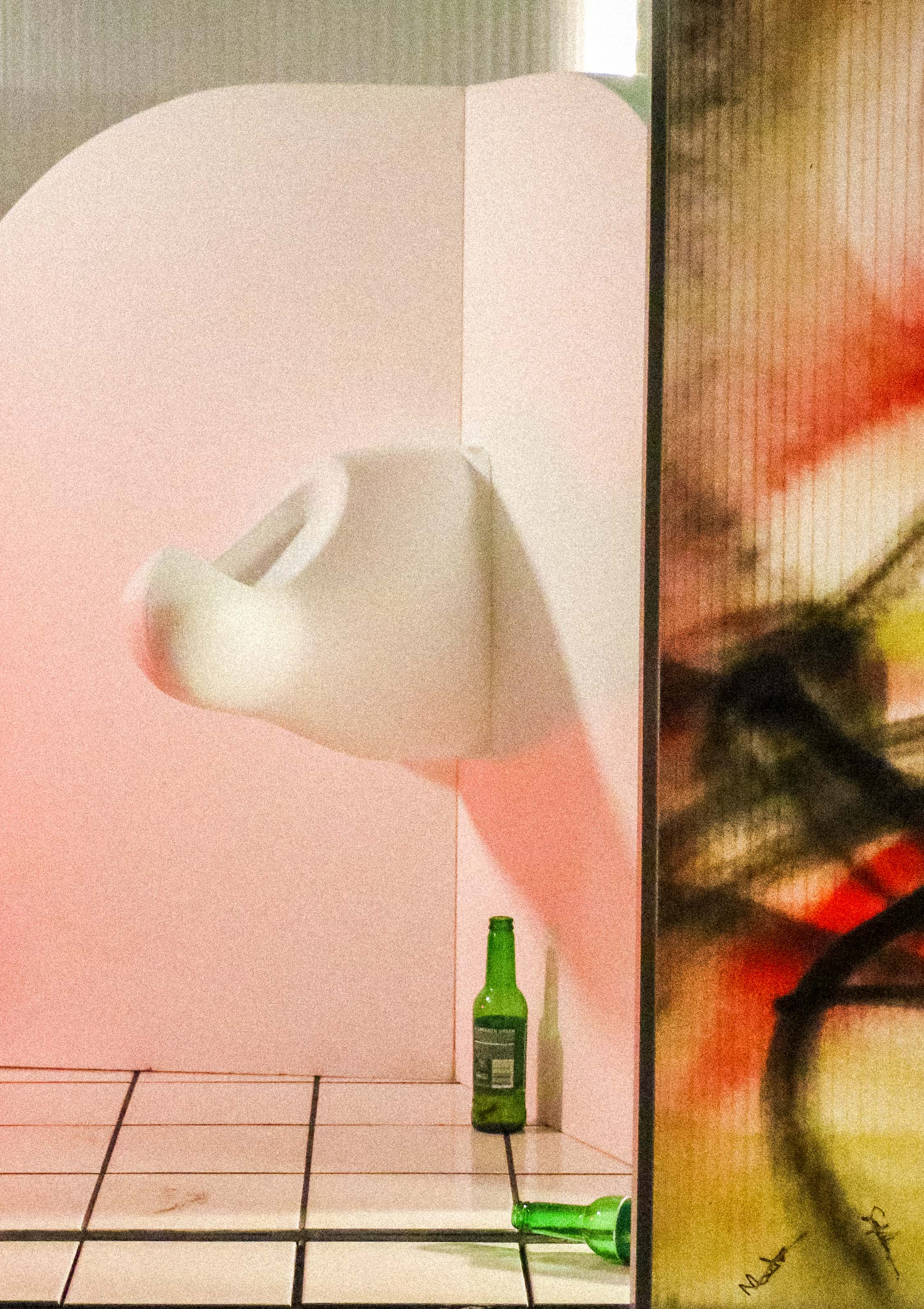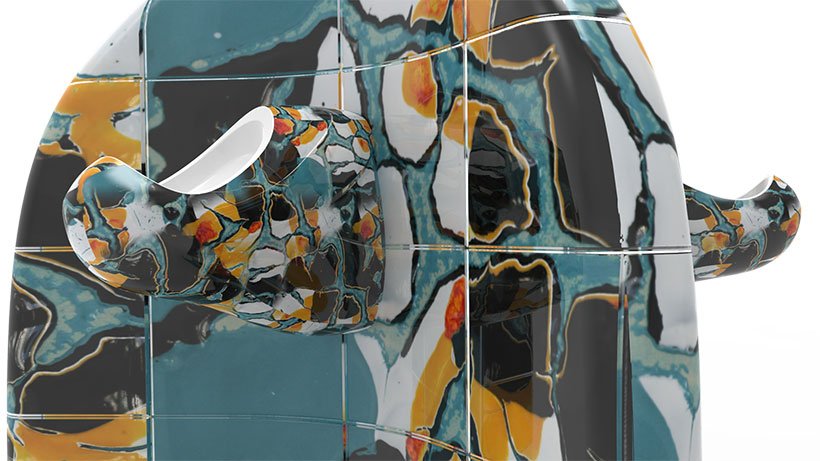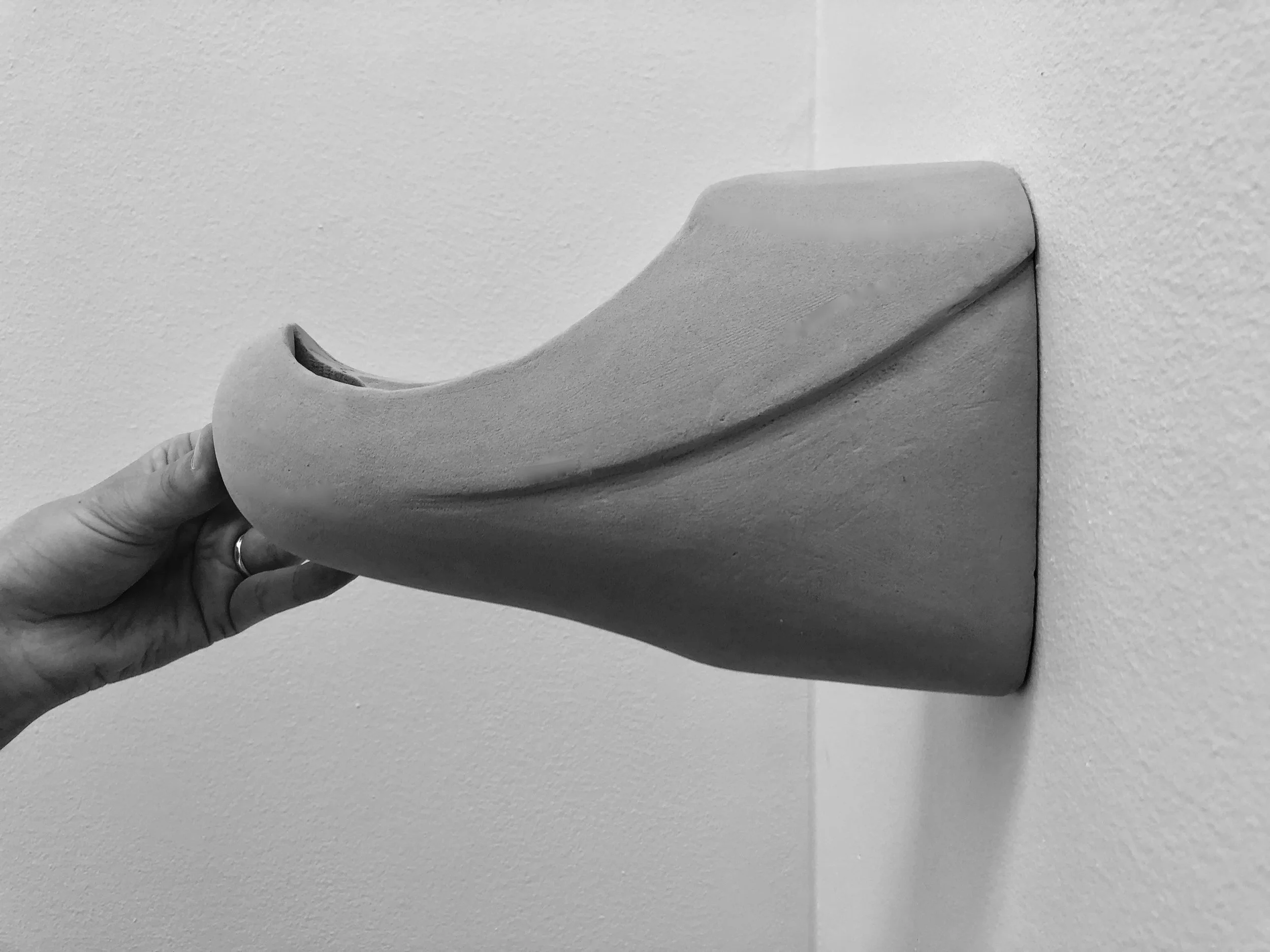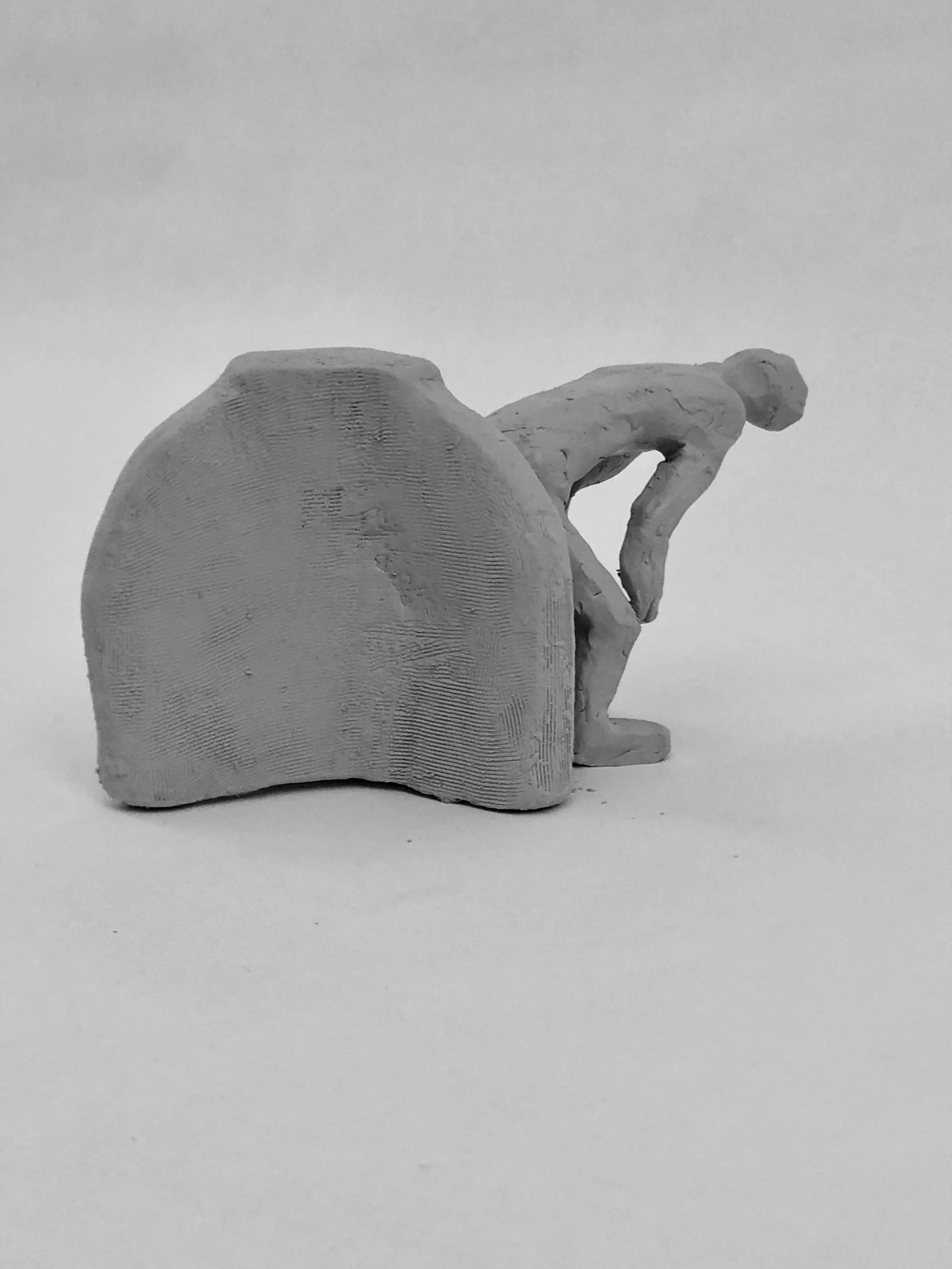Easy Pee'syA More Equal and Efficient
Solution to the Urination Frustration
Female Urinal. 2020.
Do you stand or sit down
while urinating?
This question is often associated with male toilet habits. Why is it that female toilet que’s are often the longest while men can more efficiently duck in and out?
In this degree project, I am investigating a possibility to develop a urinal for females that meets the needs of women and makes the toilet visit more efficient in a bar and nightclub environment.
In the exploration of form and material, I have experimented with expressive aesthetics.

Photography by Tove Freij

Photography by Tove Freij

Photography by Tove Freij

Photography by Tove Freij
Development
As research has shown, women are willing to sacrifice some privacy to avoid the toilet queue. Therefore, the wall module was developed without doors to make the visit more efficient.
Thanks to the low walls it is made easy to notice if the urinal is occupied or inoccupied.
The urinal module can be used by three people at the same time. The framing of the walls should enhance safety, and stability and embrace you with its arched form while protecting your back. The lack of doors will hopefully make the toilet visit quicker. The semiotic outcuts next to the bowl tell you where the legs should be placed. The urinal should be used with the back against the wall by reversing. In the correct position for clothing, the bowl shape should be between the legs and the pants under the urinal. The peeing position should be kept slightly floating above the shape of the bowl. When squatting like this, the upper body can be relieved with hands on the thighs. Now the peeing can be directed towards the inside of the bowl shape. Peeing like this requires some looking down for the best aim.
The depth and curvature of the inside bowl shape act as a splash guard and minimize back splashing before it flows down the drain. The afterpee, i.e. the peedrops that can come when the force of the jet decreases, runs down towards the bowl in the longer and slightly rising channel. The upper part of the urinal is constructed in a taller way so as not to risk anyone sitting down. The urinal is attached to the module wall where the drain is also located.

Photography by Tove Freij. Styrofoam. Digitally modelled, CNC-milled. Walls; (120 x 75 x 15) CM. Urinal; (55 x 25 x 35) CM

Earthenware glaze test. 15 x 15 x 2 CM


Digital 3D models with glaze test material, rendered in Keyshot.
Color Palette
I wanted to apply patterns to avoid the white porcelain expression that toilets have today. In my glazing process, I have wanted to create playful and controlled patterns where the glaze is applied with different techniques. As shown above, is the glazing result on the tile using a layer-on-layer technique.
For the glaze colors, I have chosen a color scale that I think fits well with each other. The color palette is one that I am attracted to in my design language with inspiration from the 60s and 70s.
The inside of the urinal is retained in a monochrome color that is picked up from the selected pattern to be used. The outside of the urinal and the wall module both have a completely patterned expression.
The pattern is applied to the outside of the urinal and the module walls. The effect of the messy pattern becomes an abstraction of graffiti.






















